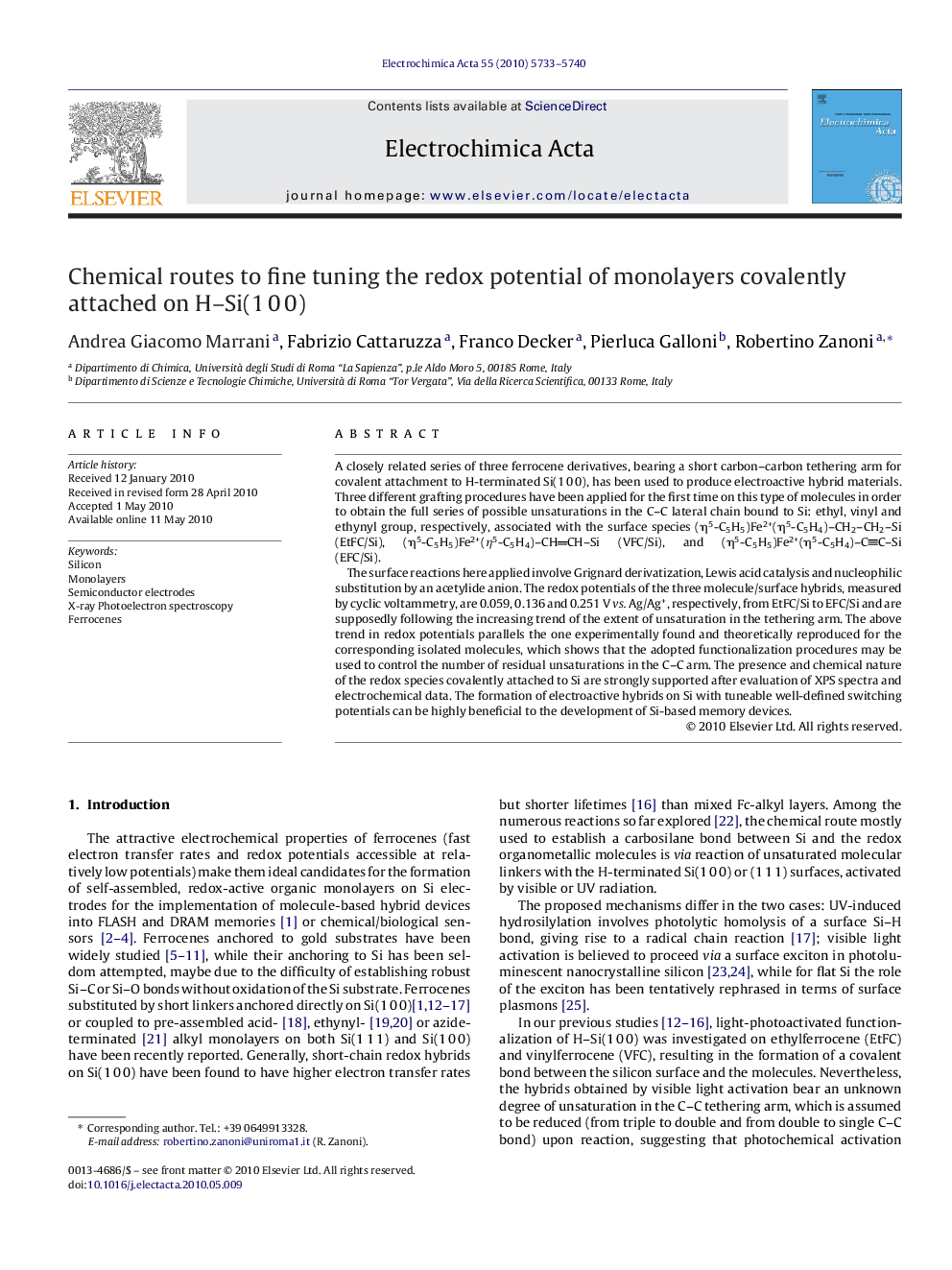| Article ID | Journal | Published Year | Pages | File Type |
|---|---|---|---|---|
| 191119 | Electrochimica Acta | 2010 | 8 Pages |
A closely related series of three ferrocene derivatives, bearing a short carbon–carbon tethering arm for covalent attachment to H-terminated Si(1 0 0), has been used to produce electroactive hybrid materials. Three different grafting procedures have been applied for the first time on this type of molecules in order to obtain the full series of possible unsaturations in the C–C lateral chain bound to Si: ethyl, vinyl and ethynyl group, respectively, associated with the surface species (η5-C5H5)Fe2+(η5-C5H4)–CH2–CH2–Si (EtFC/Si), (η5-C5H5)Fe2+(η5-C5H4)–CHCH–Si (VFC/Si), and (η5-C5H5)Fe2+(η5-C5H4)–CC–Si (EFC/Si).The surface reactions here applied involve Grignard derivatization, Lewis acid catalysis and nucleophilic substitution by an acetylide anion. The redox potentials of the three molecule/surface hybrids, measured by cyclic voltammetry, are 0.059, 0.136 and 0.251 V vs. Ag/Ag+, respectively, from EtFC/Si to EFC/Si and are supposedly following the increasing trend of the extent of unsaturation in the tethering arm. The above trend in redox potentials parallels the one experimentally found and theoretically reproduced for the corresponding isolated molecules, which shows that the adopted functionalization procedures may be used to control the number of residual unsaturations in the C–C arm. The presence and chemical nature of the redox species covalently attached to Si are strongly supported after evaluation of XPS spectra and electrochemical data. The formation of electroactive hybrids on Si with tuneable well-defined switching potentials can be highly beneficial to the development of Si-based memory devices.
